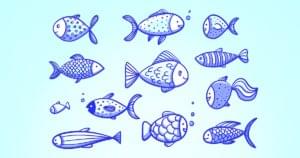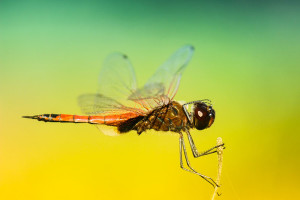Processing.js vs P5.js – What’s The Difference?
A couple of days ago, P5.js was released into the wild. It’s a JavaScript library for visual programming that follows the Processing doctrine.
As per this post:
Processing is an environment/programming language that is meant to make visual, interactive applications extremely easy to write. It can be used for everything from teaching children how to code to visualizing scientific data.
It’s the language that’s partially behind wizardry like this:
and this:
and, of course, everything you can find here.
But, if we had processing.js before, what’s P5.js?
Key Takeaways
- P5.js is a direct JavaScript port of the Processing language, aiming to make coding accessible for artists, designers, educators, and beginners, while Processing.js is a converter that interprets pure Processing code into JavaScript on the fly.
- P5.js can be extended with addon libraries, such as p5.dom.js, which adds the option of creating and manipulating HTML elements with P5, adding sliders, buttons, form elements and much more to your sketches.
- In terms of performance, Processing.js seems to have a steadier frame rate and performs better in both demos tried in the text, maintaining a steady frame rate of around 58 to 60, while P5 goes as low as 50 when drawing, and back up to 60 when idle.
- While P5.js is officially supported by the Processing Foundation and comes with a transition manual for Processing users, Processing.js allows you to learn Processing and use it in environments where it’s faster and more portable to non-web environments.
What is P5.js?

P5.js is a JavaScript library aiming
to make coding accessible for artists, designers, educators, and beginners, and reinterprets this for today’s web
So, it sounds like Processing itself. But what is it really?
Ease up, confused reader, we’ll get to it! First, watch their amazingly enthusiastic introduction here, then come back.
Did it click? Get it now? No? Ok. Let’s break it down.
Differences between Processing.js and P5.js
TL;DR: P5 is a direct JS port of the Processing language. Processing.js is a converter which interprets pure Processing code into JS on the fly. The latter requires you to learn Processing, but not JS, and vice versa.
Live compilation vs Language Translation: Processing.js is a library which takes raw Processing code (which is similar to Java, with types and all) and converts it to JavaScript on the fly. The examples you see running in your browser on the Processing.js website are, in fact, pure Processing code translated live into JS. This conversion is, for example, similar to what you get when you use Dart2js to run Dart code in browsers without a built-in Dart VM. On the other hand, P5 is a full conversion of Processing into JS code – all the functions will eventually be translated, and you’ll be writing in JavaScript.
In Processing.js, you need to define a canvas area with a data source which leads to a PDE file (a file with Processing source code). There are alternative approaches, too, but in a nutshell, that’s it. In P5, you write JS code directly, and it gets executed like any other JS file you include on your website.
Extending: Another difference is that P5 can be extended with addon libraries. For example, the p5.dom.js library addition adds the option of creating and manipulating HTML elements with P5, adding sliders, buttons, form elements and much more to your sketches – much like the demonstrators did in the Hello video we linked to in the previous section.
Note that of the two, only P5 is officially supported by the Processing Foundation and there’s even a transition manual for Processing users here.
Demos
Let’s see a demo comparison to get the full gist of it. I’ve made a Github repository containing the same demo written with each approach.
git clone https://github.com/Swader/processingIn the processing folder, you have two subfolders: processing and p5. Each will contain demo1 and demo2 subdirectories, which contain an index.html file. This is what you can run in your browser and test. The first sample is from the P5 website – a continually drawn ellipse which turns black when the mouse is clicked.
Note that Processing.js loads the pde file with an Ajax request (via XHR), so you will get a cross-origin error if you try to open it in your browser by just running index.html. To get it to run properly, you should probably set up a virtual server through which to access the samples. That’s best done with an instance of Homestead Improved in a Vagrant box – you’ll be up and running in five minutes flat.
P5.js
In this case, we need the sketch.js file which contains our sketch code, and the index.html file in which it runs. The sketch.js code is as follows:
function setup() {
createCanvas(640, 480);
}
function draw() {
if (mouseIsPressed) {
fill(0);
} else {
fill(255);
}
ellipse(mouseX, mouseY, 80, 80);
}The index.html file contains only this:
<head>
<script language="javascript" src="../p5.js"></script>
<!-- uncomment lines below to include extra p5 libraries -->
<!--<script language="javascript" src="../addons/p5.dom.js"></script>-->
<!--<script language="javascript" src="../addons/p5.sound.js"></script>-->
<script language="javascript" src="sketch.js"></script>
</head>
<body>
</body>Processing.js
For this example, we need a pde file with Processing code. In our case, that’s sketch.pde with the following P5-translated code:
void setup() {
size(640, 480);
}
void draw() {
if (mousePressed) {
fill(0);
} else {
fill(255);
}
ellipse(mouseX, mouseY, 80, 80);
}Then, we have our index.html file:
<head>
<script language="javascript" src="../processing.min.js"></script>
</head>
<body>
<canvas data-processing-sources="sketch.pde"></canvas>
</body>Analysis
At first glance, there is no discernible difference. Both samples run at approximately the same speed, perform well, and have similar syntax. However, if you’re using Google Chrome, and go to chrome://flags, then activate the frame rate counter (see the image below), you’ll notice that drawing in the Processing.js canvas maintains a steady frame rate of around 58 to 60, while P5 goes as low as 50 when drawing, and back up to 60 when idle. Another interesting fact is that Processing uses hardware acceleration all the time, even when your cursor is outside the canvas area. P5, on the other hand, pauses the rendering if no changes to the canvas are pending (your cursor is outside the drawing area), hence lightening the load while not drawing.

Demos 2
Let’s do another demo now – a simple particle effect. This particle emitter will spawn gravitationally sensitive particles in random directions, and we’ll take another look at the frame rate. The example we’ll be using (and translating to P5) is this.
Processing.js
The code for sketch.pde is the one from the example linked above:
ParticleSystem ps;
void setup() {
size(640,360);
ps = new ParticleSystem(new PVector(width/2,50));
}
void draw() {
background(0);
ps.addParticle();
ps.run();
}
// A simple Particle class
class Particle {
PVector location;
PVector velocity;
PVector acceleration;
float lifespan;
Particle(PVector l) {
acceleration = new PVector(0,0.05);
velocity = new PVector(random(-1,1),random(-2,0));
location = l.get();
lifespan = 255.0;
}
void run() {
update();
display();
}
// Method to update location
void update() {
velocity.add(acceleration);
location.add(velocity);
lifespan -= 1.0;
}
// Method to display
void display() {
stroke(255,lifespan);
fill(255,lifespan);
ellipse(location.x,location.y,8,8);
}
// Is the particle still useful?
boolean isDead() {
if (lifespan < 0.0) {
return true;
} else {
return false;
}
}
}
// A class to describe a group of Particles
// An ArrayList is used to manage the list of Particles
class ParticleSystem {
ArrayList<Particle> particles;
PVector origin;
ParticleSystem(PVector location) {
origin = location.get();
particles = new ArrayList<Particle>();
}
void addParticle() {
particles.add(new Particle(origin));
}
void run() {
for (int i = particles.size()-1; i >= 0; i--) {
Particle p = particles.get(i);
p.run();
if (p.isDead()) {
particles.remove(i);
}
}
}
}P5
The code for P5 when translated from the above is as follows:
var ps;
function setup() {
createCanvas(640, 360);
ps = new ParticleSystem(new p5.Vector(width/2, 50));
}
function draw() {
background(0);
ps.addParticle();
ps.run();
}
function Particle(lvector) {
this.location = lvector.get();
this.acceleration = new p5.Vector(0,0.05);
var random1 = Math.random() * ((Math.random() > 0.5) ? -1 : 1);
var random2 = Math.random() - ((Math.random() > 0.5) ? 1 : 2);
this.velocity = new p5.Vector(random1, random2);
this.lifespan = 255.0;
}
Particle.prototype.run = function() {
this.update();
this.display();
}
Particle.prototype.update = function() {
this.velocity.add(this.acceleration);
this.location.add(this.velocity);
this.lifespan -= 1.0;
}
Particle.prototype.display = function() {
stroke(255, this.lifespan);
fill(255, this.lifespan);
ellipse(this.location.x, this.location.y, 8, 8);
}
Particle.prototype.isDead = function() {
return (this.lifespan < 0);
}
function ParticleSystem(location) {
this.origin = location.get();
this.particles = [];
}
ParticleSystem.prototype.addParticle = function() {
this.particles.push(new Particle(this.origin));
}
ParticleSystem.prototype.run = function() {
var p;
for (var i = this.particles.length - 1; i >= 0; i--) {
p = this.particles[i];
p.run();
if (p.isDead()) {
this.particles.splice(i, 1);
}
}
}Analysis
Once again, we see a slightly better frame rate with Processing.js. P5 maintains it at around 56, while Processing.js looks to be standing ground at 58 or so. In both cases, Processing.js has proven victorious, performance-wise.
Conclusion
P5js is a young and ambitious project that aims to bring visual programming to the masses in a manner more approachable than Processing was until now. While it is currently being forced to be dumbed down somewhat feature-wise, the team is hard at work porting the rest of the Processing language to this JS counterpart.
The advantages of using P5 over Processing.js are:
- Writing JS code you’re probably already familiar with
- Officially supported by the Processing Foundation
- HTML DOM manipulation with the DOM library addon – adding common HTML elements to your P5 sketches and more
- Lighter on the resources when not drawing
The advantage of using Processing.js:
- You learn Processing and can use it in environments where it’s faster and more portable to non-web environments
- Seems to have a steadier frame rate and performs better in both demos we tried
We’ll be keeping an eye on this library and playing around with it regularly. Will you? Let us know if you whip up some interesting examples, we’d love to write about them!
Frequently Asked Questions (FAQs) about Processing.js and p5.js
What are the main differences between Processing.js and p5.js?
Processing.js and p5.js are both JavaScript libraries that are used for creating visualizations, animations, and interactive content on the web. However, they have some key differences. Processing.js is a port of the original Processing language, which was written in Java, to JavaScript. It is designed to be compatible with existing Processing code, which means it can run Processing sketches unmodified. On the other hand, p5.js is a new interpretation of the Processing principles, designed from the ground up for the web. It has a simpler, more JavaScript-like syntax and a more modern, web-friendly approach to handling media and interactivity.
Is p5.js easier to learn than Processing.js?
Yes, p5.js is generally considered easier to learn than Processing.js, especially for beginners. This is because p5.js has a simpler, more intuitive syntax that is closer to standard JavaScript. It also has a more user-friendly approach to handling media and interactivity, with built-in functions for things like mouse and keyboard input, image and sound loading, and canvas drawing. Additionally, p5.js has a very active community and a wealth of learning resources available, including tutorials, examples, and a friendly forum.
Can I use Processing.js and p5.js together in the same project?
While it is technically possible to use both Processing.js and p5.js in the same project, it is generally not recommended. This is because the two libraries have different syntaxes and approaches to handling media and interactivity, which can lead to confusion and compatibility issues. Instead, it is usually better to choose one library and stick with it for the duration of the project.
What are the advantages of using Processing.js?
One of the main advantages of using Processing.js is its compatibility with existing Processing code. If you have a Processing sketch that you want to run on the web, you can do so with minimal modifications using Processing.js. Additionally, Processing.js has a more traditional, Java-like syntax, which may be more familiar to some programmers.
What are the advantages of using p5.js?
p5.js has several advantages over Processing.js. Firstly, it has a simpler, more intuitive syntax that is closer to standard JavaScript, making it easier to learn and use. Secondly, it has a more modern, web-friendly approach to handling media and interactivity, with built-in functions for things like mouse and keyboard input, image and sound loading, and canvas drawing. Lastly, p5.js has a very active community and a wealth of learning resources available, making it a great choice for beginners and experienced programmers alike.
Can I use Processing.js or p5.js for commercial projects?
Yes, both Processing.js and p5.js are open-source libraries that can be used for commercial projects. However, it’s always a good idea to check the specific licensing terms of any library or tool you use in a commercial project to make sure you’re in compliance.
How do I choose between Processing.js and p5.js for my project?
The choice between Processing.js and p5.js largely depends on your specific needs and preferences. If you have existing Processing code that you want to run on the web, or if you prefer a more traditional, Java-like syntax, then Processing.js may be the better choice. On the other hand, if you’re starting a new project from scratch, or if you prefer a simpler, more JavaScript-like syntax and a more modern, web-friendly approach to handling media and interactivity, then p5.js may be the better choice.
Are there any performance differences between Processing.js and p5.js?
Both Processing.js and p5.js are capable of running complex visualizations and animations smoothly. However, the performance of any JavaScript library can be affected by a variety of factors, including the complexity of the code, the capabilities of the device running the code, and the efficiency of the JavaScript engine in the web browser. As such, it’s always a good idea to test your code on a variety of devices and browsers to ensure optimal performance.
Can I use Processing.js or p5.js with other JavaScript libraries or frameworks?
Yes, both Processing.js and p5.js can be used in conjunction with other JavaScript libraries or frameworks. However, it’s important to be aware of potential compatibility issues and to test your code thoroughly to ensure everything works as expected.
Where can I find learning resources for Processing.js and p5.js?
Both Processing.js and p5.js have a wealth of learning resources available. For Processing.js, you can start with the official Processing website, which has tutorials, examples, and a reference guide. For p5.js, you can start with the official p5.js website, which has tutorials, examples, a reference guide, and a friendly forum. Additionally, there are many online tutorials, videos, and courses available for both libraries.
Bruno is a blockchain developer and technical educator at the Web3 Foundation, the foundation that's building the next generation of the free people's internet. He runs two newsletters you should subscribe to if you're interested in Web3.0: Dot Leap covers ecosystem and tech development of Web3, and NFT Review covers the evolution of the non-fungible token (digital collectibles) ecosystem inside this emerging new web. His current passion project is RMRK.app, the most advanced NFT system in the world, which allows NFTs to own other NFTs, NFTs to react to emotion, NFTs to be governed democratically, and NFTs to be multiple things at once.





